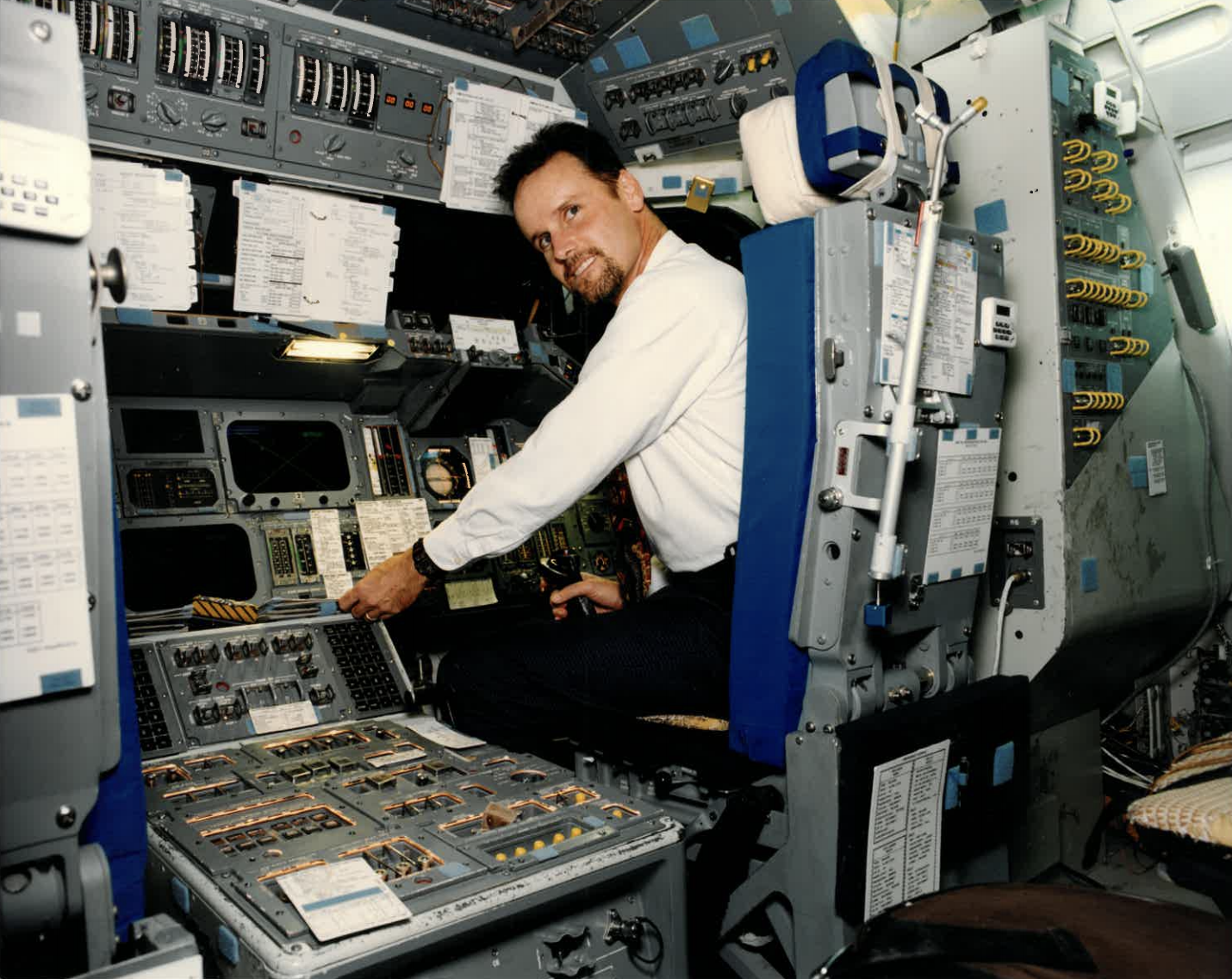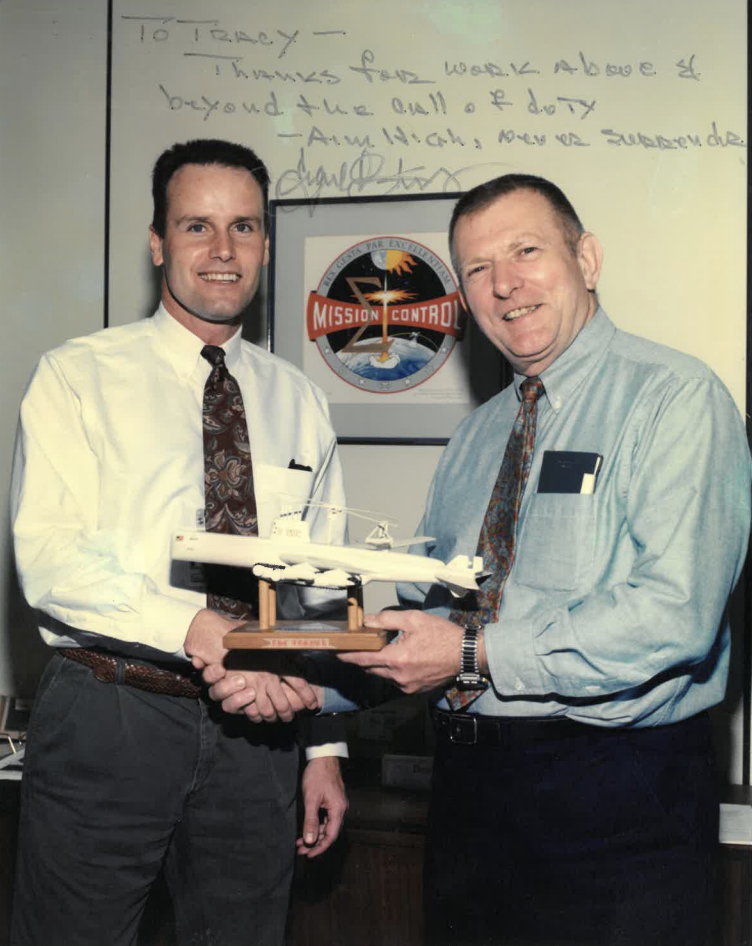Debunking The Myths Of Disability In The Workplace
By: Vanderbloemen
This blog is part 2 of a 3-part series we’re releasing on disability diversity by guest author, Tracy Minish. Tracy has worked at NASA for over 36 years while legally blind due to a defect within the PRPF-31 gene. In this series, he shares his perspective on how to handle disability diversity as a Christian leader. This blog focuses on the challenges Tracy has overcome, how NASA's culture helped him succeed, and advice for organizations looking to implement diversity efforts in their organization. You can read Tracy’s full bio here.
Begin with Part 1 in this series from Tracy Minish: Diversity Of Thought Is Mission Critical
If diversity of thought is necessary for the development of new ideas and the representation of a variety of strengths, we have to learn to work with others that think, act, and react differently than we do. There are 3 common myths about individuals with disabilities that are critical to address.
1) Individuals with disabilities are lower performers than people without disabilities.
Survey says: False, a survey showed the performance ratings to be equal.
2) People with disabilities have higher absentees.
Survey says: False, people with disabilities had lower absentees.
3) Individuals with disabilities required expensive modifications and assistive technologies to perform their work.
Survey says: False, the average cost is $313.02 a year.
After a 36-year career with a disability, my advice to someone with a disability or a dream is:
-
If you have a dream, don’t give up on it. Write down in detail about your dream. Put it into words you can see and feel, make it real.
-
Develop a road map from where you are to where you want to be. Stick it up where you will see it daily. Put it in your calendar as a monthly meeting to review. Review it often, if you are off course or behind, ask yourself why, and re-plan. Don’t stop.
-
Find a mentor in the field you wish to pursue. Ask if you can shadow them for a day. Find out what training or education is required to perform their job. Ask if they have internships, paid, or unpaid.
If you can’t get your dream job, don’t take it as a setback, but a step forward. Your first job most likely will not be your last.
-
Find out what assistive technologies are available. Become like a Jedi, become one with the technology. Feel the technology; the better you can use it, the more valuable you will be to a company's bottom line.
-
Seek out grants, scholarships, pathways to your future.
Many companies have internships, including NASA. NASA can hire a person with a disability without posting a job position, but you have to be able to fulfill the job responsibilities. If the individual with the disability is not qualified for the position, they will not get the job. It's the same hiring system we all know.
Minorities, people from low economic areas, and the disabled need opportunity, and NASA is trying to provide these opportunities. However, if we do not provide our youth the education and tools, opportunity can be a false hope. I am passionate about reaching out to our minority population, economically deprived, and disabled youth to inform them that their dreams can be made a reality. Every person deserves the right to dream and to have available the encouragement and tools needed to reach these dreams.
It is our responsibility to ensure they have the support, access to training, education, and tools to reach their goals. They still have to do some heavy lifting, but we owe them a helping hand.
Too often, counselors, doctors, parents, friends, teachers, or employers unknowingly put false limitations on people who are not part of the mainstream. I am challenging myself today and everyone who reads this blog to do more to help our youth. So that when the opportunity does come, our next generation is able to answer the call.

Why Diversity Matters Outside Of The Workplace
I work in the Flight Operations Directorate (FOD), and we are responsible for the safety of our astronauts, and mission success. Below are the foundations of FOD. Every single person in FOD can recite them from memory on demand.
To instill within ourselves these qualities essential to professional excellence:
Discipline - Being able to follow as well as to lead, knowing that we must master ourselves before we can master our task.
Competence -There being no substitute for total preparation and complete dedication, for flight (life) will not tolerate the careless or indifferent.
Confidence - Believing in ourselves as well as others, knowing that we must master fear and hesitation before we can succeed.
Responsibility - Realizing that it cannot be shifted to others, for it belongs to each of us; we must answer for what we do or fail to do.
Toughness - Taking a stand when we must; and to try again and again, even if it means following a more difficult path. (From the sermon on the hill, the narrow gate.)
Teamwork - Respecting and using the abilities of others, realizing that we work toward a common goal, for success depends upon the efforts of all. (Diversity and inclusion)
Vigilance - Being always attentive to the dangers of flight; never accepting success as a substitute for rigor in everything we do.
I have realized that many of these FOD foundations are based on Scripture. In my own journey, Scripture has guided me to a stronger foundation. I have memorized the Sermon on the Mount (Matthew 5 - 7). Jesus ends his sermon by saying that (and I am paraphrasing here) whoever follows his teaching may be compared to a person who built their home on the rock, when the storms came, their house stood firm. But whoever doesn’t follow his teaching can be compared to a person who built their home on Galveston beach, when the storms came, their house did not stand. I have found learning these 3 chapters where the words come directly from Jesus’ lips, have helped me daily in my Christian walk. I trip, slip, flip, and fall sometimes, but those words help me to dust the sand from my clothes, and start walking the walk again.

Read Part 3 in this series from Tracy Minish: The 7 Steps To Implementing Lasting Diversity Efforts At Your Church.




